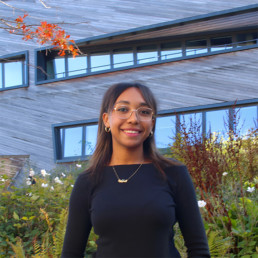#DiverseEd’s Top 10 Blogs of 2020-21

Written by DiverseEd
Diverse Educators started as a grassroots network in 2018 to create a space for a coherent and cohesive conversation about DEI. We have evolved into a training provider and event organiser for all things DEI.
We love to amplify the voices, share the journeys, and celebrate the stories of our community. Our blogs vary from sharing lived experience, to reflecting on classroom practice and curriculum design, to evaluating the impact of policy changes. We published 150 blogs from our network last academic year. You can meet our bloggers here and you can review our collection here.
Deepening our thinking around DEI starts with who and what we are reading, helping us to develop our confidence and our competence, both individually and collectively. Reading the blogs by our community provokes reflection and stimulates conversations to help us all understand the breadth and the depth of issues we need to develop an awareness of.
Themes explored in the 2020-21 blog collection include: allyship, belonging, careers, coaching, commitment, community, curriculum, culture, governance, HR, identity, ITTE, language, leadership, policy, recruitment, reflection, representation, research, safeguarding, strategy, teaching, wellbeing.
Here are our Top 10 Most-Read #DiverseEd Blogs in the 2020-21 academic year:
- How do we deal with racism in the classroom – Hannah Wilson
- How to promote an anti-racist culture in social work – Wayne Reid
- Interactive diversity calendar 2021 – Carly Hind/ Dual Frequency
- How does material deprivation intersect with ethnicity to understand the variations in the achievement among BAME students – Nicole Edwards
- Don’t tuck in your labels – Bennie Kara
- Dear Secretary of State – Hannah Wilson
- Gender is wibbly wobbly and timey wimey and gloriously so – Matthew Savage
- Engaging with diversity – giving pupils a voice – Gaurav Dubay
- Black lives matter, then now always – Wayne Reid
- Breaking the cycle anti-racist plan term 1 – Dwain Brandy
Thank you to everyone who has contributed to our #DiverseEd date and please do get in touch if you would like us to publish you. You can find out more about how to submit here.
Racist Language within an SEMH Context

Written by Sophie Tales
Associate Assistant Principal for the Mead Educational Trust in Leicester. Sophie leads on Social, Emotional Mental Health, SEND Support and Development, Transition, Oracy, Team Teach and is chair for SENCo and Family Support Worker Networks.
What does it mean when students with SEMH show prejudice within a state of crisis? How can this be managed? How should this be tackled?
Within an SEMH context there are high staff to student ratios. Therefore, in the best of settings, there is very little behavior that goes unnoticed. This means that as staff you have a very insightful position within the lives of the SEMH students that are in your care and, therefore, have an opportunity to support students within any ounce of behavior that has been shown; positive or negative.
When it comes to times of crisis for students with SEMH, this can manifest in different ways. Behaviour that can be shown as an SEMH student reaches crisis: verbal abuse, physical abuse, controlling behavior, damage of property or self-harm.
Verbal abuse can often be part of an individual student’s behavior when they are in or reaching crisis. When an SEMH student is in crisis they are in ‘Fight, Flight. Freeze.’ Fight and flight are often seen within SEMH contexts. Verbal abuse is part of the ‘Fight’. Typically abuse that I personally get is “fat”, “bitch”, “slag”, “slut”; all very much to do with my body and being female. Within this state of crisis an SEMH student is in such a state of unrest that they are attempting to show you just how badly they are feeling; sometimes they want you to feel just as badly as they do – hence the abuse. What I, as a white woman, haven’t experienced is any abuse about the colour of my skin. However, what I wish to discuss within this piece of writing is that when working with students with SEMH, racist language may well be used as abuse towards anyone; regardless of the colour of their skin.
As with any SEMH context, the behavior policy of that setting is a fundamental part of the running of the school and provides a clear set of rules, as well as opportunities, for students to follow to be rewarded for positive behavior. Racism is a key part of the policy which outlines steps of action if a student shows racial prejudice. However, what I would argue is that all contexts, SEMH or not, alongside their behavior policy, equally need a defined focus within the setting’s curriculum where ‘racism’ is being taught; for SEMH students, especially those who are white, racism is a very hard concept to understand.
The importance of having a differentiated curriculum designed to discuss what race and racism is became increasingly apparent to me when dealing with a group of white students who were increasingly using racist language towards members of staff when they were reaching a state of crisis. It became increasingly apparent that this needed an individual approach as no form of sanction was helping them change their behavior. For instance, these students all hated working away from their main class group and this was the first part of the sanction for the racist words that they had used. In the past, working away from their main class group would help these particular students to understand what they had done wrong and to stop any repeat offenses. However, with this incident, it didn’t. The words these students were using became worse and, strangely, the targets of these racist words became more varied. These students started to use these words towards anyone who was around at their point of crisis. They were not directing these racist words towards any particular skin colour; they were saying them to anyone available – white or black. This change in word direction helped me to see the issue. These students were not showing their prejudice; they were using words that they knew offended and upset people, without having any real understanding of what they were talking about.
This is where I realised I had overlooked something. I had overlooked just how complex a social construct such as racism is for any child, let alone a student with SEMH. To be able to understand racism, you are not just having to teach how historically people of colour have been treated as inferior to white people – you have to help teach the impact of community, culture, religion and, above all else, empathy. This is not an easy endeavor for students who struggle with social understanding. Yet, once this has been identified, you can identify what needs to be broken down for those students to understand the impact of their words and behavior.
For the students I was working with they needed context. They needed to understand what the words they were using meant to the staff they were saying it to. This could not come from me. A white woman telling them how it made another person feel wasn’t enough context; they needed to hear it from the person they had said it to. Secondly, they needed to see what this meant in context. They needed to see the community of people that they were directly offending when using those words. Finally, they needed to be in that community, to see those faces, and to discuss, in front of the community they were offending, when out of crisis, and to feel the weight of the language they had used.
The above approach worked. These students no longer use racist language within a state of crisis; it has been put back into a box that they know is not to be touched; regardless of the level of distress they are feeling. This is not to say that I think they will never use these words in a state of crisis again; they most likely will. But what they have now is a foundation of understanding that can be used to remind them of who they are not to use such language. Most importantly, it helped everyone involved to see that these students were not prejudiced. They were not targeting race; they were seeing a way of hurting someone as a tool for communication, without an understanding of the historical and social weight of the words they were using.
Why MeToo Matters in International Schools

Written by Charlotte Rodney
As an undergraduate student currently pursuing my law degree at Durham University, I am an advocate passionate about Human Rights, hoping to propel into a career at the Bar. Public speaking, debating, and writing have always been passions of mine, placing conversation at the forefront of my passions. With a willingness to better understand intersectionality that is necessary but often lacking in educational institutions, I continue to pursue ventures that raise awareness on the topic of racial injustice. Writing for Durham's student publication, Palatinate, and immersing myself further into the legal field as a Durham University Women in Law Mentor, as well as being a mentee of a leading Professional Negligence barrister myself, I hope to always remain immersed in academic and working practicing fields.
Whether it be #metoo, #97percent, or even Sexual Assault Awareness Month, discussions about the female experience with assault and harassment have never been free from the demeaning scrutiny so forcefully placed on us by our male counterparts.
As an active feminist, I find myself liberated when initiating discussions about women’s rights, internalised misogyny, sexual assault, and much more. Having these discussions is never the issue. What is an increasing concern is how this is received by a lot of boys and men. Time and time again, we see them immediately become defensive, adamantly insisting that these issues have nothing to do with them, and often witnessing them taking away from our experience by imposing stories of their own – arguably very different – struggles.
In response to a recent surge in sexual assault awareness following Sarah Everard’s murder, the #notallmen campaign was started. Even though there are masses of credible statistics to be cited, including the recent United Nations publication which indicated that 97% of women in the UK, aged 18-24 have experienced some sort of sexual assault, men insist that it has nothing to do with them.
Sure, not all men, but enough men, and nearly all women.
Unfortunately, the education system is not innocent. It still has a lot to answer for regarding the often toxic environment that is created in schools, resulting in young girls who are indoctrinated with ideas of repression. Now, that may sound extremely dystopian, but it’s the reality for schoolgirls all over the world including myself. As a 17-year-old, close to finishing my schooling career, I have often found myself in situations where I invalidated my own feelings in order to appeal to the male authority figure. It begins with snide comments from male classmates, escalates to abuse of power from male staff members in order to impose their threatening views, and yet, it only ever seems to be addressed in a manner that results in eventual suppression of the female voice. In turn of progressive discussions being encouraged, we are told not to talk about such “subjective matters”. Instead of our experiences with harassment being listened to, we are silenced and told to “park it and move on” and “move on”. When all we really want is to be acknowledged and approached on how men can do their part to make the world more comfortable for us, we are argued with and told to prove that there truly is a systemic bias against us.
Schools are intended to be a nurturing environment in which students leave with formulated opinions, often influenced by the system. Thus, a considered approach needs to be implemented when addressing the reality of being a woman, and it starts with young female voices at the frontline. Girls need to be encouraged to speak up, supported by an environment that makes them feel safe to do so. Boys need to be taught how to approach such situations, with consideration, validation and knowledge. And the adults in positions of responsibility must mediate with comprehension and consideration; allowing personal viewpoints to be safely shared with the sole intent of educating.
I have grown up in a world that has engineered a system, teaching girls from a young age that their voice doesn’t matter. Having had an interest in leadership roles ever since I was young, I have not been free from the titles of ‘bossy’ or ‘too big for your boots’, reinforcing this idea that, as a girl, I couldn’t take on high-power roles without their being a negative connotation to it. Yet my male classmates could pursue any role they saw fit without so much as a second glance from those around.
The patriarchal lens in which the world views women put us under so much more scrutiny than our male counterparts. Unfortunately, this has created a toxic amount of competition which has turned women against each other. Having your gender be an identifying factor that frequently puts you at risk will never be the struggle of men. It’s time that we take the immensely progressive attitudes of the 21st century and use the surplus of information in the most productive way possible. Social media may be one of our greatest allies, providing a platform for avid discussion and spreading awareness. There is often a misconception that this abundance of information equates immediately to progress. While this isn’t the case, we are still at an advantageous point of being able to use our shared experiences for change. And I believe that is exactly what we need to do.

